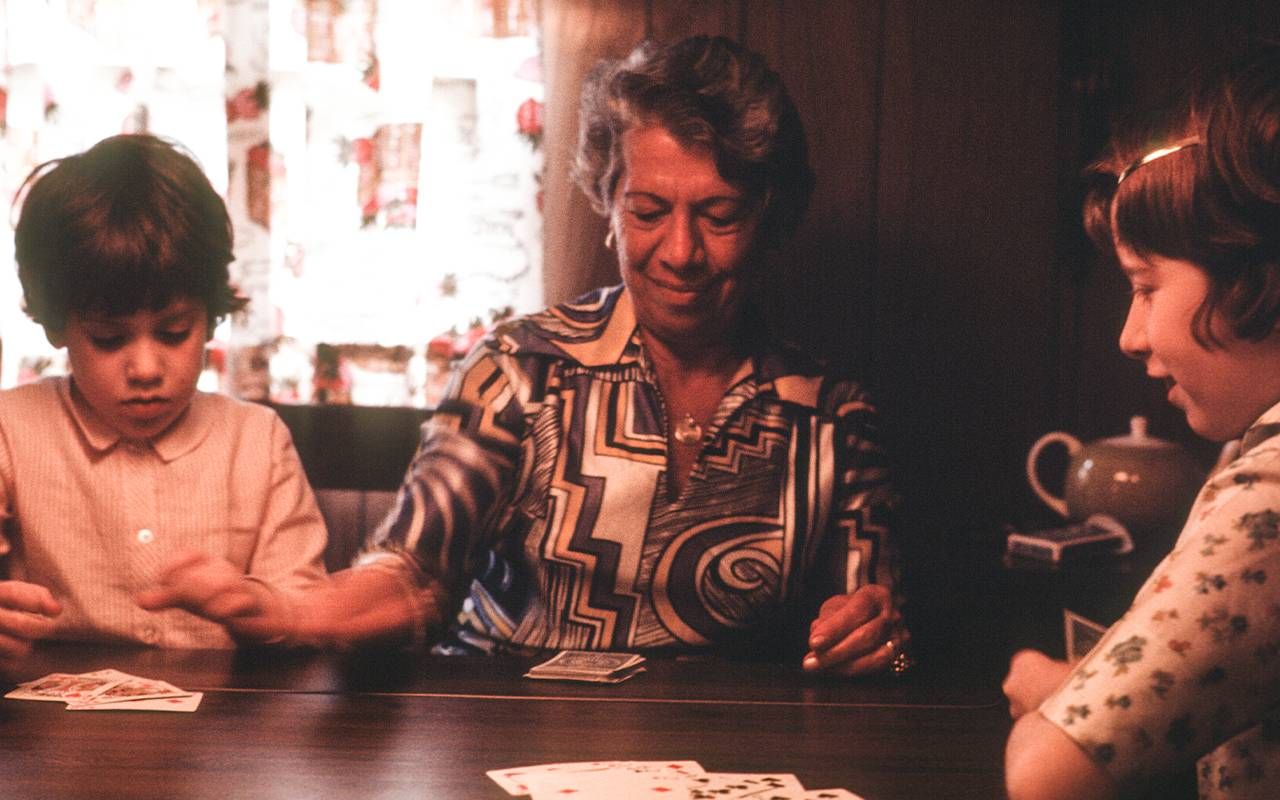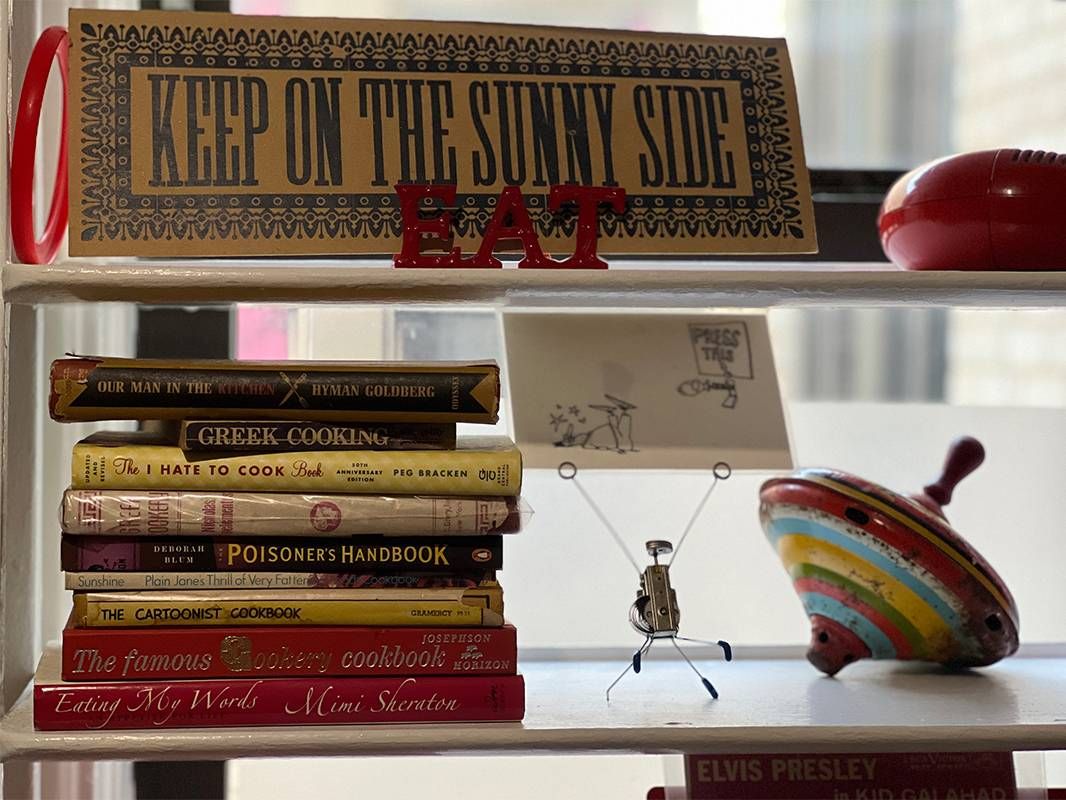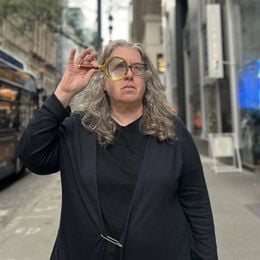How I Learned To Hate First-Class Airline Food, TV Dinners and Can Openers
My memories are of lumpy steak and burnt cake from slightly bent tin compartments. My own attempts at cooking years later didn't produce much better results.
When it was 6 p.m. on the dot, not long after man first walked on the moon, our neighbors would sit down to plates of home-cooked meals. Our first-floor hallway in the Linden Houses, a public housing complex in Brooklyn, smelled of suppers of baked and fried chicken, pork chops, meatloaf, cornbread and stuffed cabbage.

But my family wasn't like the others.
The Schulmans dined on airline food, although the closest we came to flying was waving goodbye to my grandmother as she jetted off to another adventure and watched airplanes take off and land at Kennedy Airport.
When a large cardboard box was found to be damaged and deemed unsuitable for delivery, he would deposit it on our wooden kitchen table.
Beige plastic trays with lids that popped open and large tin foil pans filled with stuffed cabbage, chicken cacciatore and fried chicken, enough to feed passengers and crew on a large jet, were our meals on some nights.
My father worked as a night manager for A. Peltz & Sons, a company in the South Bronx that distributed food to airlines, hospitals and schools. When a large cardboard box was found to be damaged and deemed unsuitable for delivery, he would deposit it on our wooden kitchen table.
"Yech," I said, closing the lid. "It's that stuffed cabbage again." I peeled back layer after layer of cabbage doused in tomato sauce to unwrap a treasure within a meatball the size of a gumball. I would gobble up half the meatballs from the box, leaving behind piles of cabbage.
Chicken cacciatore tasted like sponges doused in a gluey peppery sauce. No thanks. Although a bit orangey, fried chicken was the best of the three. Today, when asked if I am allergic to foods, my top two are stuffed cabbage and chicken cacciatore.
I learned how to order, count change, and how sharing pizza with a friend is one of the best things in the world.
When these entrees packed our refrigerator, my mother was relieved of cooking. It was a toss-up. The one constant of my childhood was the odor of burned food, from toast to chicken to soup and cookies, trailed by a thin layer of smoke hovering over the oven.
"Ma! What's for dinner?" Swanson, as in TV dinners, became the sixth person in our home. My mother raised three kids under six while my father worked the night shift. Relatives didn't live nearby. She was distracted, uninspired and overwhelmed.
I remember picking at lumpy steak and burnt cake from slightly bent tin compartments. Olive oil was used to soothe sore throats and other ailments, never for cooking. Dingy peas and carrots were poured out of cans. Spaghetti, overcooked and clingy, was shuffled around our plates.
'Would Anyone Like to Trade?'
School lunches weren't much better. My Partridge Family lunchbox was cheerful, but its contents were not. Lunch was usually Oscar Mayer bologna and a slice of Kraft American cheese between two slices of Wonder white bread. Sometimes, the cheese wasn't even unwrapped.
Dingy peas and carrots were poured out of cans. Spaghetti, overcooked and clingy, was shuffled around our plates.
"Would anyone like to trade?" I gave it the old Girl Scout try among my grade school peers. There were never any takers. While my brother saved his allowance, my two dollars a week were spent on slices of pizza, rice and gravy from a local Chinese takeout.
Before street lights turned on at dusk, Amy Philipson and I, nine or ten back then, walked to the strip mall on Pennsylvania Avenue. I learned how to order, count change and how sharing pizza with a friend is one of the best things in the world. It still is.
We spoke about revisiting those times. But early one morning in 2018, a speeding driver hit Amy's SUV so violently that it exploded into flames. Walking to the subway on my way home from her funeral, I found a pizzeria and ordered two slices. I couldn't finish them.
The Early Years of My Family
Although my mother's cuisine tasted like it was left over from the time of Aristotle, my grandmother's menu included spanakopita (spinach pie), feta cheese, olives, pasticcio (Greek lasagna), kasatas (cheese pies), and moussaka (eggplant): nothing frozen, nothing burnt and no cabbage.
Anna Attas David―called Nonie for grandmother―descended from a tribe called Romaniotes, dating back to over 2,300 years in Greece. Nonie and Papou (Greek for grandfather) were born in Janina (Ioannina). They were not Sephardic Jews from Spain or Ashkenazi Jews from Eastern Europe.
Still, a much smaller group of Jews who spoke their dialect followed their liturgy and married within their community. As part of my documentary, "Keeping the Faith: Meet the Romaniotes!" (in production) I discovered a solid link between food and their/our/my survival.

When my grandmother, her parents, and three sisters emigrated to New York City's Lower East Side in the early 1900s, they hustled for work as soon as inspectors processed them through Ellis Island. Papou came later after he married my grandmother in the 1930s.
They skipped religious services to work on Saturdays to pay their rent, selling aprons, nightgowns, and underwear door to door and then from pushcarts and storefronts. My grandmother curled feathers and typed letters. Great aunts and uncles sewed dresses in factories.
My grandfather moved up from managing a dry goods store to owning Greek luncheonettes, tying on an apron, and serving endless cups of coffee as my grandmother handed out change as his cashier. Nonie cooked Greek specialties for holidays and for the raucous card parties my grandparents hosted. But when my grandfather died in 1964, most of that ended.
Farmer cheese purchased from the Greek-owned Gristede's supermarket in solidarity with my roots plopped onto the floor.
She bought a car and typed up reports and manuscripts as a medical secretary to Dr. Irving S. Cooper, a neurosurgeon who pioneered treatments for Parkinson's disease at St. Barnabas Hospital in the Bronx. She had little time to cook.
Many years ago, I asked Nonie and her older sister, Auntie Esther (Nachman), to write down their recipes. Kasatas included cream cheese, neither Greek nor from Philadelphia, and farmer cheese, lighter and less salty than feta.
"The local stores may not have had feta cheese or had the same ingredients," said Marcia Ikonomopoulos, museum director of Kehila Kedosha Janina, a synagogue on the Lower East Side that preserves Romaniote history. "Back then they used what was available to them. It would alter the taste but not the concept."
Attempting Family Recipes
I decided to bake, film and photograph — at the same time — my grandmother's and great-aunt's kasatas, noodle pudding, bagel cookies and spinach pie. This was a daunting adventure for someone who makes grilled cheese sandwiches fried in olive oil and then cut in half with Auntie Esther's sewing scissors.
I ordered baking pans from Amazon. I discovered too late that they are best for cookies. The milk, fresh spinach and egg mixture dripped into the innards of my stove. Farmer cheese purchased from the Greek-owned Gristede's supermarket in solidarity with my roots plopped onto the floor.

With little counter space, a bowl of flour rested on top of bananas on a stove burner. Slightly damp copies of the recipes covered my kitchen table, which serves as my desk because it's within two feet of the refrigerator. Nonie included a note.
"Dearest Arlene, I hope you can follow this, but it is much easier to learn by watching. That's how I got to make them. Love, Nonie." I wish I had.
Auntie Esther's recipe for bagel cookies is quite detailed: "If your hands get sticky, she wrote, rub some flour and put it together to the dough. Make them like breadsticks. It's easy. Then round. Don't forget to grease the pan. Make sure they don't burn."
Spinach pie tasted like — spinach pie crackers. Not bad. The bagel cookies were simple but tasty, perfect for the coffee I don't drink. The cake-like noodle pudding was, as my grandmother would say, delirious. Kasatas looked like overweight Popeye's biscuits. They smelled like my grandmother's. I ate four.
How my grandmother and the Romaniotes survived to 95 is beyond me. My cholesterol shot up 300 points.
How my grandmother and the Romaniotes survived to 95 is beyond me. My cholesterol shot up 300 points. I took three subway trains to her old apartment in honor of Nonie and her recipes. Instead of older women in house dresses sitting outside and gossiping in Greek, older men sat in folding chairs talking about baseball and listening to merengue.
I stood outside of her apartment door and thought I heard 1010 WINS news radio that turned on every morning while coffee percolated as she poured milk for Frosted Flakes cereal. I rummaged through her old handbags, looking for change. My Greek relatives were all back together again. And like a sharpshooter, whack! Nonie's bedroom slippers were an enemy to the apartment's cockroaches.
There she was at night, rinsing off Noxzema and then dabbing on hair remover to remove her mustache. I leaned on the windowsill to watch city buses rumble into the night. I pressed the square doorbell. No one answered. My fist pounded the door like a police officer looking for a suspect. Finally, a man in his twenties with a towel wrapped around his waist opened the door.
We managed to understand each other through Google Translate that the building was once filled with Greek Jews from Janina, my grandmother lived in the apartment for 50 years, and I spent many weekends visiting.
Could I take a look at the apartment? His Spanish was translated into English: I cannot let you in because I am not the apartment owner. Come back at 7:30. "Muchas gracias," I said, bowing with anticipation. "I will come back later."
Later that evening, I rang the doorbell and knocked on the door again. The same man called out angry words in Spanish that I did not understand. "Policia! Policia!" he shouted, that I understood. Did he think I was the police? Was he going to call 911 on a somewhat middle-aged woman leaning on a blue cane in the stifling hallway of an apartment building she once spent so much time in?
My fist banged again. This time, he was dressed and holding a beer. It was, after all, a Saturday night. "Go away! Go away!" he yelled and slammed the door shut. It's not the end of my story.
Like my grandmother's recipes, neighborhoods and people adapt and change. I'll visit that apartment when someone else moves in. Later that evening, I scrolled through Delta flights to Athens and decided to bring my food on the plane. In my grandmother's honor, I purchased spinach pie from Inwood Gourmet.
The smell of something charred reminded me that I had left it in the oven too long. The next time, I'll text a friend and go out for a slice of pizza.


